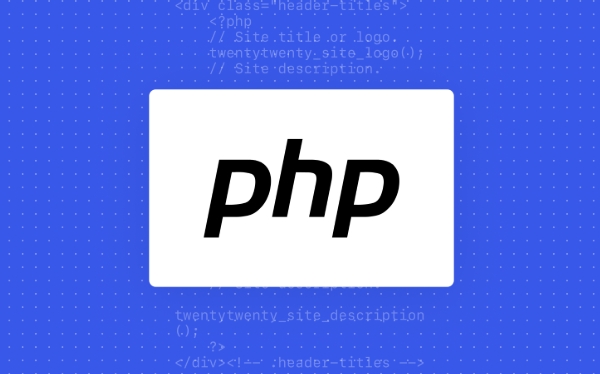There are three common ways to create auxiliary PHP functions in Laravel. 1. Use the helpers.php file: Create Helpers.php in the app/ directory, write the function, add a path in the autoload.files of composer.json and run composer dump-autoload to implement global calls; 2. Use the macroable feature: add custom methods to Laravel existing classes such as Collection through the macro() method, which conforms to the framework design style; 3. Create service classes: Applicable to complex logic, such as creating HelperService class encapsulation methods and using dependency injection or app() calls, for easy maintenance and testing. Pay attention to avoid function name conflicts, use global functions reasonably, and remember to run composer dump-autoload to make the changes take effect.

Creating a secondary PHP function in Laravel is actually quite simple. The key is to find the right place to store it and ensure it can be called easily. Laravel provides a variety of ways to add custom helper functions. Let’s take a look at several common practices.

1. Use helpers.php file (recommended)
This is the most common and flexible way. You can create a globally available helper function file, such as helpers.php , and call it at any time in the project.
Operation steps:

- Create a
Helpers.phpfile (or whatever name you like) inapp/directory. - Write your function in this file, such as:
<?php
if (!function_exists('format_date')) {
function format_date($date, $format = 'Ym-d')
{
return \Carbon\Carbon::parse($date)->format($format);
}
}- Then open the
composer.jsonfile and add this file path to theautoloadfilesarray:
"autoload": {
"files": [
"app/Helpers.php"
]
}- Finally run:
composer dump-autoload
In this way, your function is available globally, format_date() can be called directly in the controller, view, or Blade template.
2. Use Laravel's macroable feature (suitable for extending existing classes)
If you don't want to write a completely independent function, but want to add methods to existing classes in Laravel (such as Collection , Response , Request , etc.), you can use macro() .

For example:
use Illuminate\Support\Collection;
Collection::make()->macro('toUpper', function () {
return $this->map(function ($item) {
return strtoupper($item);
});
});Then you can use it on any Collection:
collect(['a', 'b'])->toUpper(); // ['A', 'B']
The advantage of this method is that it is more in line with Laravel's design style and can reuse existing class structures.
3. Create a service class (suitable for complex logic)
If your "helping function" logic is more complicated or requires dependency injection, it is not suitable to use global functions. At this time, you can create a service class.
step:
- Create a service class, such as
app/Services/HelperService.php:
namespace App\Services;
class HelperService
{
public function formatPrice($price)
{
return '$' . number_format($price, 2);
}
}- Then use it in the controller or Blade template:
app(\App\Services\HelperService::class)->formatPrice(99.99);
Or use it through dependency injection.
This method is more suitable for large projects and is easy to maintain and test.
Some notes:
- Avoid function name conflicts : It is a good habit to use
function_exists()to wrap function definitions. - Don't overuse global functions : Too cluttered helper functions will reduce maintainability.
- composer dump-autoload Remember to run : otherwise the newly added auxiliary files will not take effect.
Basically that's it. Creating helper functions is not difficult in Laravel. The key is to choose the appropriate method based on the project size and needs. If used well, it can greatly improve development efficiency.
The above is the detailed content of How to create a helper php function in Laravel?. For more information, please follow other related articles on the PHP Chinese website!

Hot AI Tools

Undress AI Tool
Undress images for free

Undresser.AI Undress
AI-powered app for creating realistic nude photos

AI Clothes Remover
Online AI tool for removing clothes from photos.

Clothoff.io
AI clothes remover

Video Face Swap
Swap faces in any video effortlessly with our completely free AI face swap tool!

Hot Article

Hot Tools

Notepad++7.3.1
Easy-to-use and free code editor

SublimeText3 Chinese version
Chinese version, very easy to use

Zend Studio 13.0.1
Powerful PHP integrated development environment

Dreamweaver CS6
Visual web development tools

SublimeText3 Mac version
God-level code editing software (SublimeText3)
 PHP Variable Scope Explained
Jul 17, 2025 am 04:16 AM
PHP Variable Scope Explained
Jul 17, 2025 am 04:16 AM
Common problems and solutions for PHP variable scope include: 1. The global variable cannot be accessed within the function, and it needs to be passed in using the global keyword or parameter; 2. The static variable is declared with static, and it is only initialized once and the value is maintained between multiple calls; 3. Hyperglobal variables such as $_GET and $_POST can be used directly in any scope, but you need to pay attention to safe filtering; 4. Anonymous functions need to introduce parent scope variables through the use keyword, and when modifying external variables, you need to pass a reference. Mastering these rules can help avoid errors and improve code stability.
 How to handle File Uploads securely in PHP?
Jul 08, 2025 am 02:37 AM
How to handle File Uploads securely in PHP?
Jul 08, 2025 am 02:37 AM
To safely handle PHP file uploads, you need to verify the source and type, control the file name and path, set server restrictions, and process media files twice. 1. Verify the upload source to prevent CSRF through token and detect the real MIME type through finfo_file using whitelist control; 2. Rename the file to a random string and determine the extension to store it in a non-Web directory according to the detection type; 3. PHP configuration limits the upload size and temporary directory Nginx/Apache prohibits access to the upload directory; 4. The GD library resaves the pictures to clear potential malicious data.
 Commenting Out Code in PHP
Jul 18, 2025 am 04:57 AM
Commenting Out Code in PHP
Jul 18, 2025 am 04:57 AM
There are three common methods for PHP comment code: 1. Use // or # to block one line of code, and it is recommended to use //; 2. Use /.../ to wrap code blocks with multiple lines, which cannot be nested but can be crossed; 3. Combination skills comments such as using /if(){}/ to control logic blocks, or to improve efficiency with editor shortcut keys, you should pay attention to closing symbols and avoid nesting when using them.
 How Do Generators Work in PHP?
Jul 11, 2025 am 03:12 AM
How Do Generators Work in PHP?
Jul 11, 2025 am 03:12 AM
AgeneratorinPHPisamemory-efficientwaytoiterateoverlargedatasetsbyyieldingvaluesoneatatimeinsteadofreturningthemallatonce.1.Generatorsusetheyieldkeywordtoproducevaluesondemand,reducingmemoryusage.2.Theyareusefulforhandlingbigloops,readinglargefiles,or
 Tips for Writing PHP Comments
Jul 18, 2025 am 04:51 AM
Tips for Writing PHP Comments
Jul 18, 2025 am 04:51 AM
The key to writing PHP comments is to clarify the purpose and specifications. Comments should explain "why" rather than "what was done", avoiding redundancy or too simplicity. 1. Use a unified format, such as docblock (/*/) for class and method descriptions to improve readability and tool compatibility; 2. Emphasize the reasons behind the logic, such as why JS jumps need to be output manually; 3. Add an overview description before complex code, describe the process in steps, and help understand the overall idea; 4. Use TODO and FIXME rationally to mark to-do items and problems to facilitate subsequent tracking and collaboration. Good annotations can reduce communication costs and improve code maintenance efficiency.
 Quick PHP Installation Tutorial
Jul 18, 2025 am 04:52 AM
Quick PHP Installation Tutorial
Jul 18, 2025 am 04:52 AM
ToinstallPHPquickly,useXAMPPonWindowsorHomebrewonmacOS.1.OnWindows,downloadandinstallXAMPP,selectcomponents,startApache,andplacefilesinhtdocs.2.Alternatively,manuallyinstallPHPfromphp.netandsetupaserverlikeApache.3.OnmacOS,installHomebrew,thenrun'bre
 How to access a character in a string by index in PHP
Jul 12, 2025 am 03:15 AM
How to access a character in a string by index in PHP
Jul 12, 2025 am 03:15 AM
In PHP, you can use square brackets or curly braces to obtain string specific index characters, but square brackets are recommended; the index starts from 0, and the access outside the range returns a null value and cannot be assigned a value; mb_substr is required to handle multi-byte characters. For example: $str="hello";echo$str[0]; output h; and Chinese characters such as mb_substr($str,1,1) need to obtain the correct result; in actual applications, the length of the string should be checked before looping, dynamic strings need to be verified for validity, and multilingual projects recommend using multi-byte security functions uniformly.
 Learning PHP: A Beginner's Guide
Jul 18, 2025 am 04:54 AM
Learning PHP: A Beginner's Guide
Jul 18, 2025 am 04:54 AM
TolearnPHPeffectively,startbysettingupalocalserverenvironmentusingtoolslikeXAMPPandacodeeditorlikeVSCode.1)InstallXAMPPforApache,MySQL,andPHP.2)Useacodeeditorforsyntaxsupport.3)TestyoursetupwithasimplePHPfile.Next,learnPHPbasicsincludingvariables,ech






